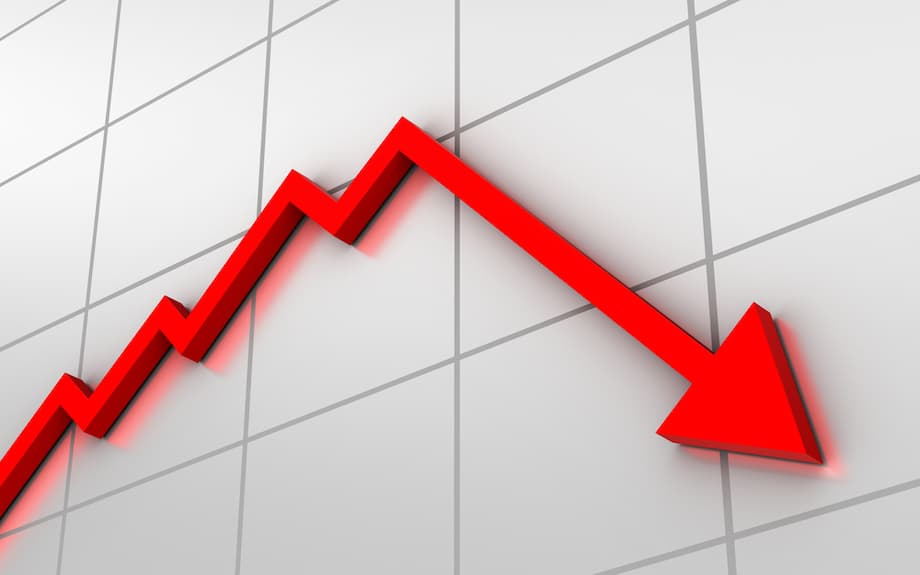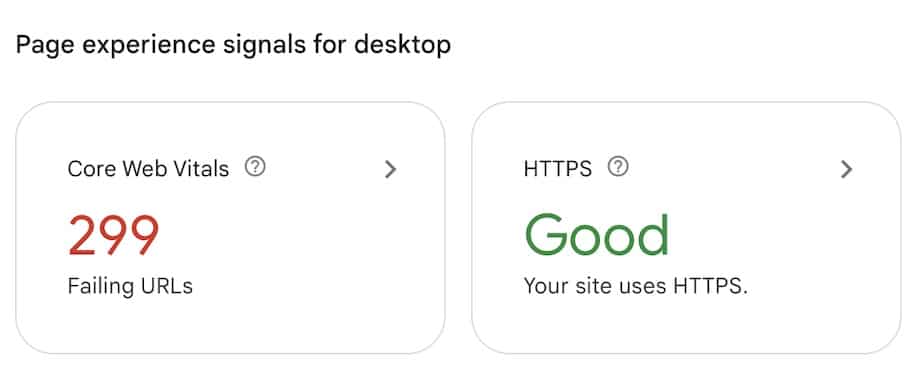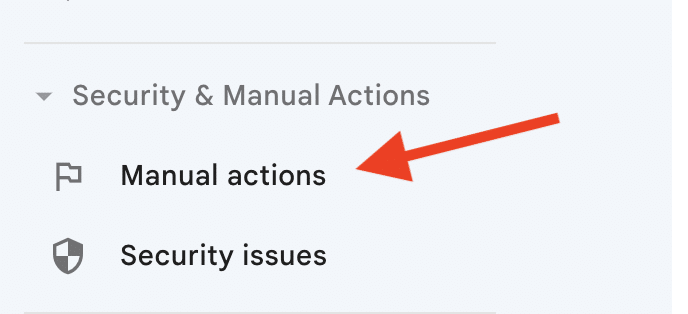A robust online presence isn’t just essential—it’s the lifeblood of businesses striving to thrive in a fiercely competitive digital landscape.
Imagine your website basking in the limelight at the top of search engine results (SERPs), particularly on the almighty Google.
This isn’t just about bragging rights. It’s about turbocharging your visibility and magnetizing a torrent of eager visitors to your digital doorstep.
But beware, brave digital voyager, for the journey through Search Engine Optimization (SEO) is no cakewalk. Hidden amidst the labyrinthine corridors of SEO, a lurking menace known as the “Google Penalty” can swiftly cast a shadow over your aspirations.
This is not a gentle nudge, but a formidable obstacle capable of tarnishing your rankings and siphoning away precious web traffic.
In this article, we’ll embark on an odyssey, illuminating the cryptic world of Google Penalties. We’ll unravel the very fabric of these penalties, arming you with the discerning eye needed to spot their elusive presence.
But remember, this isn’t just about detection. It’s about preservation. We’ll hammer home why you must dodge these digital landmines at all costs, ensuring your digital realm remains unscathed and flourishing.
What Is a Google Penalty?
Imagine this: you’ve poured countless hours and resources into optimizing your website for search engines.
Your rankings were steadily climbing, and you were enjoying the benefits of increased organic traffic. Then, seemingly out of the blue, your website plunges in the search results.
This sudden drop in visibility is often the consequence of a Google Penalty.
A Google Penalty is a punishment imposed by Google upon a website that breaches its Google Search Essentials (formerly Webmaster Guidelines) or resorts to unethical SEO tactics to manipulate search rankings.
These penalties can profoundly impact a website’s search engine rankings, leading to reduced organic traffic and, consequently, diminished revenue and brand exposure.

Types of Google Penalties
Manual Penalties
Manual penalties are like a red flag waved by Google’s human reviewers when they spot blatant violations of the search engine’s Search Essentials.
These penalties directly result from actions considered manipulative or unethical in SEO. When a manual penalty is issued, it’s directed at specific pages within a website or, in more severe cases, encompasses the entire website.
Here’s a closer look at manual penalties:
Keyword Twins: Navigating the Maze of Similar SEO Terms
Same or similar keywords is a situation where multiple pages on a website are optimized for the exact same keyword or incredibly closely related keywords.
This scenario can confuse search engines because the content on these pages appears almost interchangeable. It makes it challenging for search algorithms to discern which page to prioritize in search results.
For instance, consider a tech website that aims to rank well for smartphone-related queries.
On this website, you may see one page optimized for the keyword “best smartphones for 2023” and another targeting “top-rated cell phones 2023.”
These keywords are remarkably similar, differing only slightly in wording.
Such proximity in keyword choice creates competition between these pages. Both strive to secure high rankings for the same user query—finding highly regarded smartphones in 2023.
- Specific Violations
Manual penalties are usually pinpointed to specific violations of Google’s guidelines.
These violations can encompass various issues, including unnatural backlinks, keyword stuffing, cloaking (presenting different content to search engines and users), thin or duplicate content, and more. - Severity Varies
The severity of a manual penalty can vary depending on the nature and scale of the violation. Google may issue a warning for milder infractions or take more drastic measures for repeated or egregious violations.
Examples: Manual penalties may take the form of “Thin Content” penalties, “Unnatural Links to Your Site” penalties, or “User-generated Spam” penalties, among others. Each type corresponds to a specific violation.
If a manual penalty is issued, webmasters can rectify the issues and submit a reconsideration request through Google Search Console. If satisfied with the corrective actions, Google will review the request and may lift the penalty.
Algorithmic Penalties
Algorithmic penalties, unlike their manual counterparts, are not directly initiated by human intervention.
Instead, they result from Google’s algorithms continuously evaluating websites for violations of its guidelines. When a website fails to meet the specified criteria, the algorithms can impose penalties in the form of ranking drops or decreases in visibility.
Here’s a deeper dive into algorithmic penalties:
- Autonomous Assessment
Algorithmic penalties are automatically applied by Google’s algorithms, such as Panda, Penguin, and others. These algorithms regularly assess websites to detect any breaches of the guidelines. - Nature of Violations
Algorithmic penalties typically target violations related to content quality (like meeting their EATT or YMYL guidelines), backlink profiles, and user experience.
For instance, the Panda algorithm assesses the quality of website content. The Penguin algorithm scrutinizes backlink profiles for spammy or manipulative links. - No Direct Notification
Unlike manual penalties, algorithmic penalties do not result in direct notifications to webmasters. Website owners often realize they have incurred an algorithmic penalty when they observe significant drops in rankings or traffic.
Recovering from an algorithmic penalty involves identifying the underlying issues, rectifying them, and then waiting for Google to revisit and reassess the website. The penalty may be lifted automatically when the issues are resolved and no longer violate guidelines.
In summary, manual penalties are the result of explicit human review and target specific violations. Algorithmic penalties are autonomously imposed by Google’s algorithms and primarily focus on content quality, backlinks, and other factors that affect user experience and search results.
Understanding the distinctions between these penalties is essential for effective SEO management and recovery strategies.

Penalty categories
Downranking
Downranking is a form of penalty that inflicts a significant blow to a website’s visibility by causing a drop in search engine rankings.
This penalty affects all the pages on a website, leading to a noticeable decline in organic traffic and, consequently, a reduction in the website’s overall performance in SERPs.
Here’s a more detailed look at downranking penalties:
- Comprehensive Impact
Downranking penalties have a sweeping impact, affecting all the pages that violate Google’s guidelines or algorithms. It doesn’t target specific pages but rather impacts the entire website. - Ranking Declines
The primary consequence of a downranking penalty is a noticeable drop in search engine rankings. This means that the affected website’s pages will appear lower in search results, making it less likely for users to find and visit those pages. - Traffic Reduction
As a direct result of lower rankings, downranking penalties substantially reduce organic traffic. With diminished visibility in search results, fewer users will click on the website’s pages, adversely affecting website performance, conversions, and revenue. - Recovery Process
Recovering from downranking penalties involves identifying the specific issues that led to the penalty, addressing them comprehensively, and then waiting for Google to reevaluate and potentially restore the website’s rankings. This process can take time – often several months – and requires a commitment to adhering to Google’s guidelines.
Delisting
Delisting represents one of the most severe Google penalties a website can face.
In this scenario, Google removes all the URLs from the website’s domain from its index. This means that none of the website’s pages will appear in Google search results, rendering the website virtually invisible to users seeking information through Google.
Here’s a closer examination of delisting penalties:
- Complete Removal
Delisting is an all-encompassing penalty. It removes all the URLs associated with a website’s domain from Google’s index. When users perform a site:search for the affected website, they will find no results. - Profound Impact
Delisting profoundly and immediately impacts a website’s visibility and traffic. The website’s pages are entirely excluded from Google’s search results, becoming invisible to potential visitors. - Serious Violations
Delisting is usually reserved for websites that violate Google’s guidelines or participate in malicious activities, such as spreading malware, phishing attempts, or hosting harmful content. - Recovery Complexity
Recovering from delisting is a complex and challenging process. It requires identifying and rectifying the issues that led to such a severe penalty, followed by a request to Google for reconsideration. Google will only lift the delisting penalty when convinced that the issues are fully resolved and that the website no longer poses a threat to users.
Downranking and delisting penalties represent two different degrees of severity in Google’s penalty system.
Downranking leads to ranking declines and reduced traffic. Delisting completely removes a website from Google’s index, making it invisible in search results.
Both penalties underscore the importance of adhering to Google’s Search Essentials guidelines and maintaining a clean, user-friendly online presence to avoid such severe consequences.
4 Telltale signs of Google Penalties
Recognizing a Google Penalty early can help mitigate the damage and expedite recovery.
Here are some telltale signs to watch out for:
- Sudden Drop in Rankings
When a Google Penalty strikes, one of the most conspicuous signs is a sudden and substantial decline in your website’s search engine rankings.
Pages that once occupied top positions may plummet to obscurity in search results, significantly reducing your online visibility. This drop in rankings can be particularly alarming, as it often leads to decreased organic traffic and potential revenue loss.
- Traffic Plunge
A sharp and alarming reduction in organic traffic indicates that your website may grapple with a Google Penalty.
The penalty’s impact on your site’s rankings directly translates into fewer users clicking on your pages in search results. Your website experiences a significant decrease in organic traffic, which can harm your online presence and business performance.
- Manual Notification
Google occasionally sends manual penalty notifications via Google Search Console to inform webmasters about specific issues that have led to a penalty.
These notifications provide valuable insights into the nature of the penalty and the actions required to rectify it. They are crucial in helping website owners understand the reasons behind the penalty and take steps towards recovery.

- Negative SEO Attack
If your website becomes the target of negative SEO tactics, such as the proliferation of spammy backlinks or other malicious activities, it can trigger a Google Penalty.
These practices often aim to undermine your site’s credibility in the eyes of search engines. Recognizing the signs of a negative SEO attack and addressing them promptly is vital to prevent or recover from a penalty.
Tools to identify manual and algorithmic penalties
Google Search Console
Google Search Console is an indispensable tool for website owners and SEO professionals.
It offers a direct line of communication with Google and provides vital insights into your site’s health. Within the console, you can access valuable information about your website’s performance in search results, indexing status, and potential issues that might lead to Google Penalties.
One of its primary functions is to send notifications regarding manual actions taken by Google.
These notifications detail the specific problems that have triggered a manual penalty and offer guidance on rectifying them. Google Search Console is an essential ally in proactively identifying and addressing penalties to maintain a healthy online presence.
Google Analytics
Google Analytics is a powerful tool for analyzing website traffic patterns and user behavior.
By closely monitoring your website’s organic traffic, you can detect sudden and significant drops that may coincide with algorithm updates or penalties. These drops in traffic are a red flag, indicating that your website’s visibility in search results may have been adversely affected.
Google Analytics allows you to delve into the data, pinpoint the specific pages or keywords impacted, and take prompt action to address the issues and initiate the recovery process.
SEO Audit Tools
Comprehensive SEO audit tools like Moz, SEMrush, and Ahrefs are indispensable for website owners and SEO professionals seeking to maintain a healthy online presence.
These tools offer a multifaceted approach to identifying potential penalty issues. They provide in-depth insights into your website’s performance, including on-page SEO, backlink profiles, and technical SEO.
By running a thorough website audit, these tools can uncover issues that might trigger Google Penalties, such as duplicate content, toxic backlinks, or technical errors.
Additionally, they offer actionable recommendations to resolve these issues, making it easier to proactively prevent penalties and ensure your website adheres to Google’s guidelines for sustainable, long-term success in search rankings.
Detecting manual penalties
Manual penalties are simple to identify.
Go to Google Search Console and check the “Manual actions” section in the table of contents on the left.
If you want to check for any previous penalties, you can review the messages under the bell icon in the top right corner.


For manual penalties, it’s clear-cut. You’ll see a red penalty notice specifying what issues Google has detected. These issues can stem from things like
- paid links,
- keyword stuffing,
- or auto-generated content (anything intentionally added to manipulate rankings.
If there are no issues, you’ll see a message stating everything is fine. Good Job!
Detecting algorithmic penalties
Detecting algorithmic penalties, which often evade direct notifications, demands vigilant monitoring of your rankings. Partnering with a professional SEO company like My Website Spot can streamline this process, ensuring a proactive penalty detection and resolution approach.
It’s important to find a tool that can track the following items:
- Website Project Setup
- Keyword Precision
- SERP History Recording
- Competitor Benchmarking
- Automated Ranking Checks
My Website Spot’s SEO team will meticulously track your rankings, amassing a wealth of data to pinpoint potential Google penalties. Within our tracking tools, we scrutinize ranking trends and closely examine any abrupt drops in rankings for your target keywords.
Moreover, we compare these fluctuations with those experienced by your closest competitors, gaining insights into industry dynamics.
We keep a vigilant watch on Fluctuation Graphs with SERP details. When significant volatility emerges in search results, it often signals Google’s algorithmic adjustments or technical glitches. In such cases, our team acts swiftly to adapt and optimize your SEO strategy.
Despite major Google updates, we conduct a comprehensive website audit to unearth any latent technical issues that could hinder performance. With My Website Spot as your SEO partner, you can rest assured that your website receives expert care, constant vigilance, and proactive measures to keep it penalty-free and optimized for sustained success.
The Importance of Avoiding Google Penalties
- Protecting Your Online Reputation
Your website is often the first point of contact between your business and potential customers. A Google Penalty can tarnish your online reputation, eroding trust and credibility. - Safeguarding Organic Traffic
Organic traffic is a valuable asset that can drive leads, conversions, and revenue. A penalty can lead to a significant drop in traffic, negatively affecting your bottom line. - Cost-Efficiency
Preventing a Google Penalty is far more cost-effective than trying to recover from one. Avoiding penalties means not having to allocate resources to fix issues or hire experts to assist in recovery. - Long-Term Sustainability
Ethical SEO practices and adherence to Google’s guidelines ensure long-term sustainability. You can build a strong and resilient online presence by avoiding shortcuts and black-hat techniques.
Frequently Asked Questions
- How long does it take to recover from a Google Penalty? The time required for penalty recovery varies depending on the severity of the penalty, the issues involved, and the effectiveness of the recovery strategies employed. It can take weeks to several months to fully recover.
- Can I recover from a Google Penalty on my own? While it’s possible to attempt recovery on your own, it can be a complex and time-consuming process. Partnering with a professional SEO company like My Website Spot can expedite recovery and increase your chances of success.

- What are some common SEO practices that can trigger Google Penalties?
Common practices that can lead to penalties include- keyword stuffing
- When webmasters excessively cram keywords into their content to manipulate rankings, Google takes notice. For instance, a website about coffee might awkwardly stuff phrases like “best coffee beans for sale” repeatedly in a paragraph, compromising user experience.
- cloaking
- This tactic involves showing different content to search engines than what visitors see, violating Google’s guidelines. For example, a website might present users with genuine information about hiking boots but display unrelated content like pharmaceutical ads to search engine crawlers.
- duplicate content
- Copy-pasting content from other sources or replicating your own material across multiple pages can trigger penalties. For instance, an e-commerce site using identical product descriptions found elsewhere online may face ranking issues due to duplicate content.
- low-quality backlinks
- Low-quality backlinks, such as those from spammy directories or irrelevant websites, can lead to Google Penalties. For instance, a website may have acquired numerous backlinks from a network of unrelated, low-authority websites that provide no genuine value to users. Google views this as an attempt to manipulate rankings and may penalize the website by reducing its visibility in search results.
- and engaging in link schemes
- Using link schemes, such as buying or exchanging links with other websites to manipulate rankings, can trigger Google Penalties. For example, a website might participate in a link exchange program where it links to unrelated sites in exchange for backlinks. Such manipulative practices violate Google’s guidelines, and, if detected, can result in penalties that harm the website’s search rankings.
- keyword stuffing
- How can I proactively avoid Google Penalties
To avoid penalties, focus on producing high-quality, user-centric content, following Google’s guidelines, monitoring your website’s performance, and staying up-to-date with SEO best practices. - Are Google Penalties permanent?
Google Penalties are NOT permanent. Once you address the underlying issues and take corrective actions, you can submit a reconsideration request to Google. The penalty can be lifted once they determine that you have rectified the issues.
Don't wait until a penalty strikes!
Google Penalties can be a significant setback, impacting your rankings, traffic, and reputation. However, you can safeguard your website’s future by understanding what Google Penalties are, how to spot them, and the importance of avoiding them.
Don’t wait until a penalty strikes—take proactive steps to protect and enhance your online presence today.
Contact My Website Spot for expert SEO services, including
- Thorough SEO assessments.
- Recovery from penalties.
- Ongoing SEO management to prevent penalties.
- Ethical, user-focused SEO strategies.



